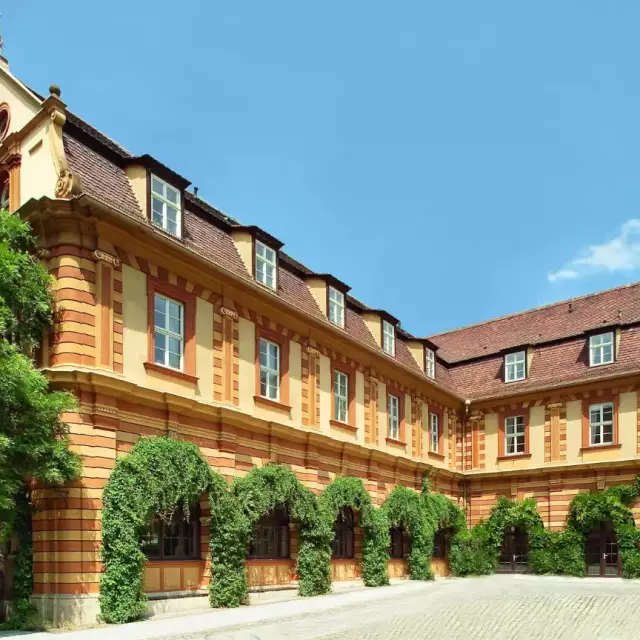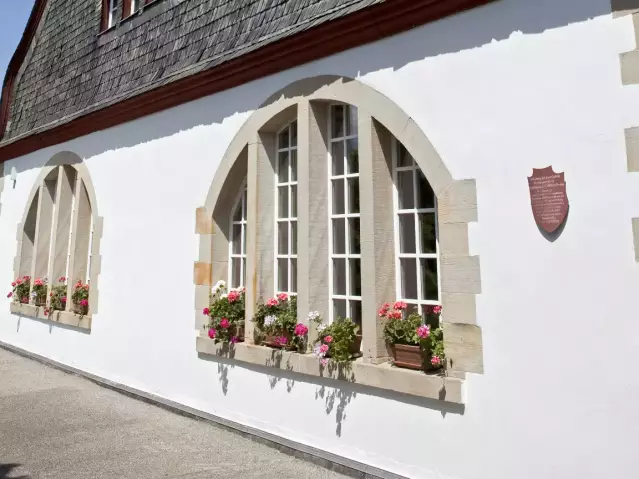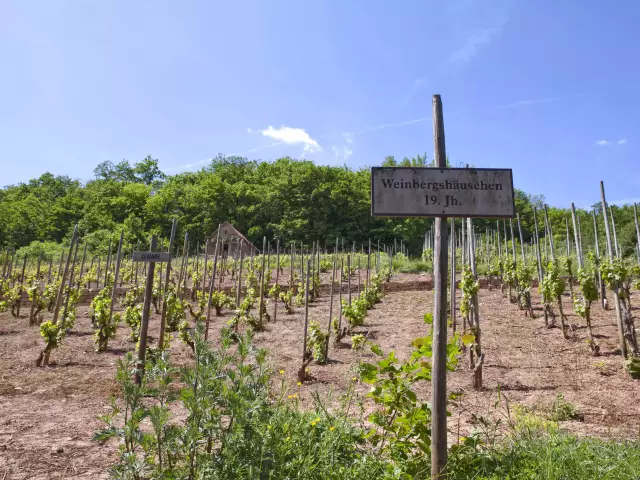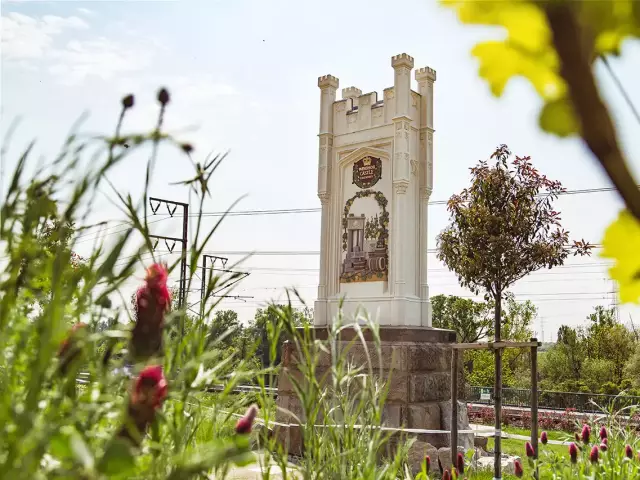Winery : Bürgerspital und Würzburger Steinwein

One is Germany's oldest charitable foundation that owns a wine estate; the other is one of Germany's oldest vineyards bearing a site-specific name and the two have been inextricably linked for centuries: the Bürgerspital zum Heiligen Geist estate and the Würzburger Stein vineyard.
Both bear witness to Germany’s venerable tradition of wine culture. One of Germany’s oldest bottles of wine – a "Steinwein" from the exceptional vintage of 1540 – still lies in the Bürgerspital’s cellar.
Wine from the "Stein" (literally, stone) vineyard was already praised by the famous German poet Johann Wolfgang von Goethe as his favorite, and in general, the slope rising from the banks of the Main has always been noted for its rare combination of incline, exposure, concave shape, and proximity to the river. Wine grapes were being cultivated as long ago as 779, and as such, the site’s 85 hectares of vines not only comprise Germany’s largest individual site, but also one of the oldest bearing a specific site name. Silvaner grapes were first planted here in 1665 by the Cistercian abbot Aberich Degan. During vineyard reconsolidation some 300 years later, a memorial stone documenting the fact was unearthed. It is now on display in the cellar of the Bürgerspital, as is the last bottle of one of the region’s oldest wines, which dates from 1540. When the wine critic Hugh Johnson opened one of the few remaining bottles of this white wine at a tasting in London in 1961, he was surprised to find that it was “still lively” and “even reflected its German origin."
The history of the Bürgerspital began in 1316, when the distinguished patrician Johannes von Steren and his wife Mergardis donated their property to the city of Würzburg, provided that it would be used to house the sick, the poor, and the needy. Known as the “Bürgerspital zum Heiligen Geist” since the 16th century, it steadily grew in size as it received additional endowments from wealthy Würzburg citizens. The first vineyards were acquired in 1334 to help finance the foundation as well as supply its residents, regardless of sex, a daily ration of wine (equal to just over a liter [quart] in 1598 – a fairly modest quantity in those days).
Soon, the Bürgerspital was able to finance its charitable activities through viticulture, agriculture, and property management. Viticulture, however, was subject to crises time and again. In 1726, for example, it was deemed necessary to take action against the “evil machinations” of those who adulterated wine. The city council, in the name of the prince bishop, decreed that henceforth (as of vintage 1718), “Steinwein” had to be bottled and sealed in one-liter “Bocksbeutel” (flattish, spherical-shaped bottles with a short neck) in the cellars of the Bürgerspital. The measure was effective. The price for a Fuder (1,000 liters) of wine rose fivefold. At the same time, this marked the birth of Bürgerspital wines bottled in the Bocksbeutel. Today, the cellar houses a remarkable collection of historical Bocksbeutel, as well as a vast number of oak casks (ca. 200), many with elaborately carved barrel fronts.
The “Stein-Wein-Pfad,” a signposted path (4 km) through the Stein vineyard, affords panoramic views and ends at Weingut am Stein, an estate known for its award-winning architectural design. Estate proprietor Ludwig Knoll owns a few parcels in the Stein site, yet the majority share is equally divided among Würzburg’s three grand, traditional estates: Juliusspital, Bürgerspital, and Staatlicher Hofkeller.




